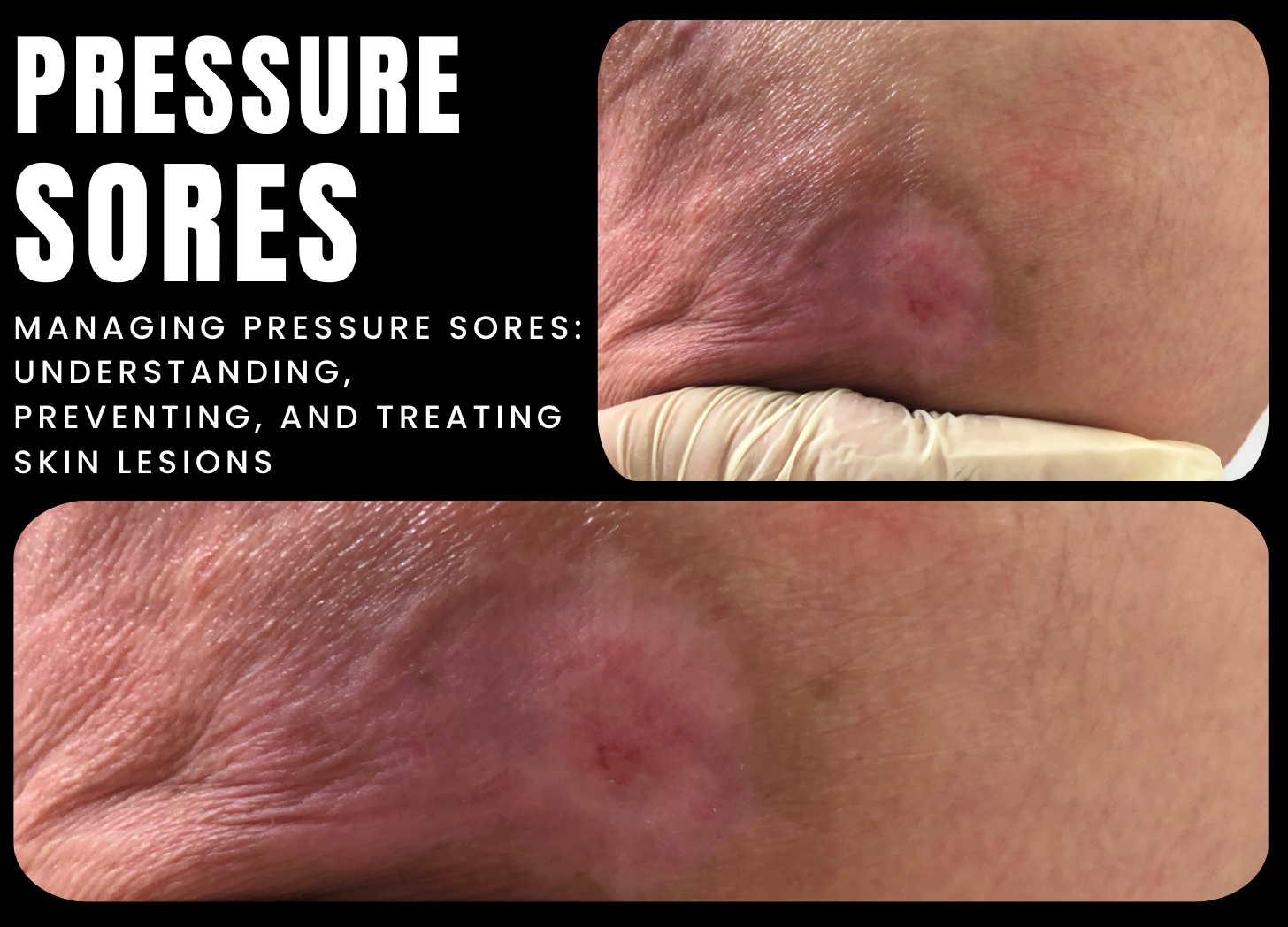Contact Us
Contact Us

Pressure sores, sometimes called pressure ulcers or bedsores, are skin and underlying tissue lesions caused by continuous pressure or friction. They are most common on the heels, ankles, hips, tailbone, and back of the skull, although they can also appear elsewhere on the body. Pressure sores are a major health concern, especially for people who have restricted movement or are bedridden, because they can lead to serious problems like infection, tissue necrosis, and delayed wound healing.
Pressure sores are caused primarily by prolonged pressure on the skin, which can restrict blood flow to the affected area and deprive tissues of oxygen and nutrients, resulting in tissue damage and disintegration. Pressure sores can also be caused by friction or shear pressures on the skin, wetness or humidity, inadequate nutrition, reduced sensibility or circulation, and certain medical disorders such as diabetes or vascular disease. Individuals who are bedridden, wheelchair bound, or have difficulties changing postures are more likely to develop pressure sores.
Common symptoms of pressure sores include skin redness, soreness, or coloring, changes in skin texture (such as warmth, swelling, or hardness), open wounds or ulcers with or without drainage, and evidence of infection (such as fever, increased discomfort, or foul-smelling discharge). Pressure sores are graded into four severity levels, ranging from mild (stage I) to severe (stage IV), based on the depth of tissue involvement and extent of tissue destruction.
Pressure sores are normally diagnosed through clinical evaluation, which includes a comprehensive examination of the skin and underlying tissue, as well as taking into account the individual’s medical history, mobility status, and risk factors for pressure sore development. Diagnostic techniques such as imaging examinations (such as X-rays or MRI) or tissue biopsies may be used to determine the extent of tissue damage or rule out other illnesses.
Treatment for pressure sores seeks to relieve pressure on the affected area, improve wound healing, and minimize consequences including infection or tissue necrosis. Pressure sores can be managed by repositioning the individual on a regular basis to relieve pressure on vulnerable areas, using specialized support surfaces (such as pressure-relieving mattresses or cushions), maintaining skin hygiene and moisture control, providing adequate nutrition and hydration, and implementing wound care protocols (such as debridement, dressings, or topical medications) to promote healing.
To summarize, pressure sores are common injuries to the skin and underlying tissue caused by continuous pressure or friction on the skin, especially among those who have limited mobility or are bedridden. Early detection, prevention, and early treatment are critical for controlling pressure sores and avoiding complications. Healthcare workers and caregivers can assist prevent the development of pressure sores and improve outcomes for those at risk by implementing techniques to reduce pressure and friction on the skin, encouraging skin health and hygiene, and targeting underlying risk factors.
References:
1.National Institute on Aging. (2022). Pressure Sores (Pressure Ulcers). Retrieved from https://www.nia.nih.gov/health/pressure-sores-pressure-ulcers
2.Mayo Clinic. (2022). Pressure Sores. Retrieved from https://www.mayoclinic.org/diseases-conditions/bed-sores/symptoms-causes/syc-20355893
Post a Comment